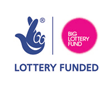Design Technology
Design and Technology
Vision
Excellence achieved through care, creativity and challenge.
Intent
As a practical subject, our curriculum for DT is designed to give as much experience with actual hands-on skills as possible. As well as allowing pupils to be creative, it exposes them to the history and importance of design. Our curriculum is designed in this way to provide pupils with the substantive and disciplinary knowledge required to become a creative and skilled designer.
Implementation
Cambridge has recently been recognised for its contributions to global technology research and design. Our specific curriculum has been crafted to support and reflect this and inspire future designers and technology enthusiasts. Our curriculum covers all areas highlighted in the National Curriculum. The purple threads represent key elements that sum up and underpin the subject, which are Nourishment, Movement and Enterprise. Pupils are given opportunities to practise new skills linked to the topic, then apply them to a specific situation/challenge. Making is key, in line with a design brief and evaluating the success of meeting this brief. This emphasis is given as our catchment demography shows that our pupils are not given opportunities for using craft/art/making skills at home and therefore the school needs to provide all of these experiences for them. The school is very well equipped with tools and materials for each theme, along with a healthy year group budget for purchasing resources required to deliver the theme effectively. This allows for both high quality, practical modelling by staff and high quality, meaningful outcomes for pupils.
Key information for teachers and pupils is provided in the Knowledge Organisers which also highlight important vocabulary that is expected to be developed and utilised during the theme. Lessons are delivered from planning following the system of building on prior knowledge, basic (learn/acquire it) advancing (reason it) deepening (apply it). Opportunities are given to teachers to show high-quality examples and models (created in previous years) of final products before starting the project. The themes have been selected to excite, inspire and accumulate new skills whilst connecting back to prior learning.
Impact
DT lessons are popular with the pupils, particularly themes linked to developing baking and cooking skills. This is particularly good as it prepares the children for the future as they can apply these basic skills to adult life. The expectation is that every child will reach the age-related expectation in the subject. They are encouraged to make connections between the projects they undertake and the real world around them, citing examples and finding their own links. Teachers assess pupils against the KPIs, but equally importantly pupils reflect fully on their own success and learning with respect to the product they design and build. Children have a greater knowledge and understanding of the design process, the importance of resilience, redesign, making amendments and being able to articulate their ideas, successes and failures. These processes help pupils to view themselves as real designers. Knowledge Organisers are self-assessed and highlighted to demonstrate pupils’ learning. These are kept in theme folders and demonstrates their progression and acquisition of skills.
Enhancements
Children are able to share all stages of their work every term in a design technology themed assembly. Examples of work are also celebrated and displayed around the school. A weekly design-technology club has been popular with key stage two children where the children have worked individually and in small groups to create useable objects (for example a marble run). These items have then been displayed for parents and staff to see and test.
Design Technology Progression
Knowledge Organisers are available here: www.kingshedgesprimary.org.uk/learning/knowledge-organisers















